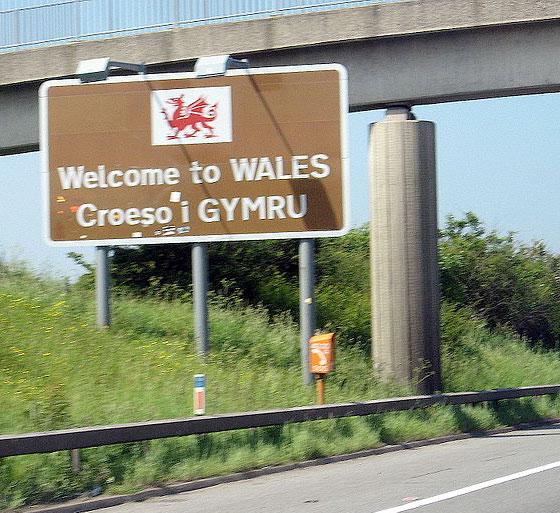- News
- Reviews
- Bikes
- Accessories
- Accessories - misc
- Computer mounts
- Bags
- Bar ends
- Bike bags & cases
- Bottle cages
- Bottles
- Cameras
- Car racks
- Child seats
- Computers
- Glasses
- GPS units
- Helmets
- Lights - front
- Lights - rear
- Lights - sets
- Locks
- Mirrors
- Mudguards
- Racks
- Pumps & CO2 inflators
- Puncture kits
- Reflectives
- Smart watches
- Stands and racks
- Trailers
- Clothing
- Components
- Bar tape & grips
- Bottom brackets
- Brake & gear cables
- Brake & STI levers
- Brake pads & spares
- Brakes
- Cassettes & freewheels
- Chains
- Chainsets & chainrings
- Derailleurs - front
- Derailleurs - rear
- Forks
- Gear levers & shifters
- Groupsets
- Handlebars & extensions
- Headsets
- Hubs
- Inner tubes
- Pedals
- Quick releases & skewers
- Saddles
- Seatposts
- Stems
- Wheels
- Tyres
- Health, fitness and nutrition
- Tools and workshop
- Miscellaneous
- Tubeless valves
- Buyers Guides
- Features
- Forum
- Recommends
- Podcast
news
 Wales welcome sign
Wales welcome signWelsh Assembly to act after rise in car travel
A three per cent increase in the number of people commuting by car has given fresh impetus to a Welsh Assembly Government push to end schemes inaccessible by foot or bike.
Statistics Wales's state of the environment report reveals that the number of people commuting by car rose three per cent to 82.6 per cent between 1999 and 2008. Across the UK the proportion has remained at around 70 per cent, while the proportion of journeys to work on foot or bicycle fell by three per cent over the same period to 10.2 per cent.
The figures come after Welsh environment minister Jane Davidson vowed to act if councils disregard planning advice to allocate sites for development that can be reached without a car.
Sustrans Cymru director Lee Waters said: "We have wonderful policies on integrating transport and land-use planning, but car-dependent developments still go ahead."
DLP Planning senior planner in Cardiff Matthew Hard added: "Planners are often not considering the provision of non-road links at the outset of developments. Too frequently they are an afterthought.”
The news comes as ambitious plans have been announced for Swansea Waterfront to make the city one of Britain’s major maritime centres, and improving the links between the waterfront and the rest of the city is seen as essential in reviving the fortunes of Swansea’s city centre.
As part of the plans, new cycling and walking paths are to be established along the Tawe waterside, which is also to be spruced up with statues, surfacing and lighting. The pathways will be networked to the rest of Swansea’s city centre as part of overall plans to create better links between the centre and its waterfront.
The council and the Welsh Assembly Government will jointly fund the project, which is seen as a major part of the council’s city centre framework, a blueprint for development of the city up to 2020.
The framework envisages a “European boulevard” leading from the middle of the city to the sea, and more connections between the city, its civic centre and the showpiece Swansea Waterfront.
The CUK members' own stories about their travels in the mag make me wonder whether road.cc could built up a bank of readers' favourite routes? It...
Boardman is brilliant at getting the point over. It's all about presentation and showing the benefits to all.
Or, alternatively, get the Aldi front and rear for £15. The rear doesn't flash like the previous models, but does have the braking function. The...
There is no way on that terrain the wheels would clog up.
No. But do you think Trump is? 🤡💩🤣
Was a stocking-filler type thing but always handy - reflective spoke straws. (They're not reflecting as I turned the flash off.)
Dont forget Linford Christie
I'm confused. What base layer isn't damp after a warm effort - it's the purpose of their entire existence. Wringing wet I might agree with. ...
To add to the comedic potential, I really hope said chef was dressed in whites, including a toque blanche, and armed with a whisk and cleaver.
Don't open at Edinburgh Fringe with that one.